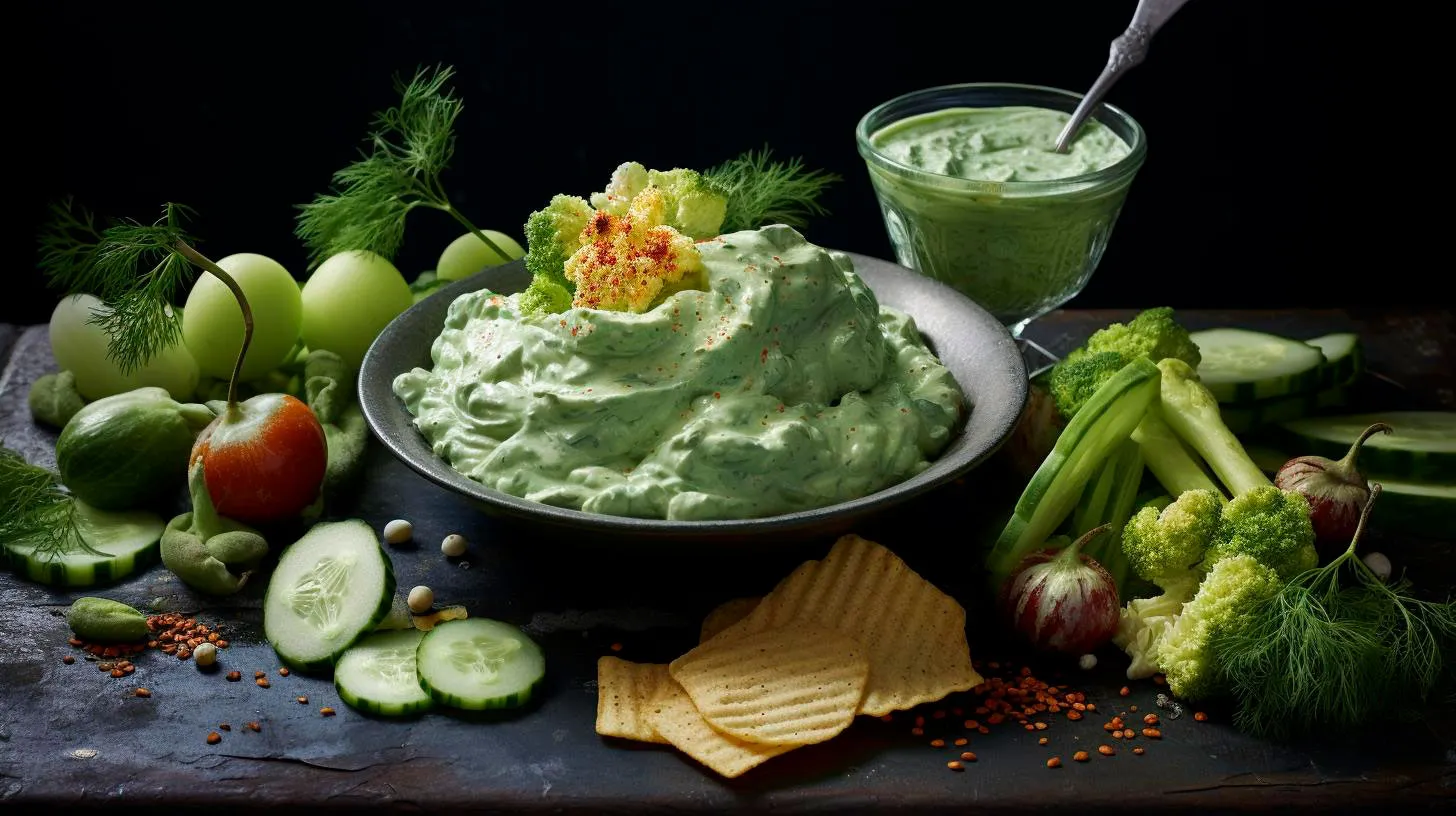Conserving the Ocean: A Closer Look at Sustainable Seafood Practices
In this article, we will explore the concept of sustainable seafood, its importance, and the key practices that contribute to the conservation of our marine ecosystems.
The Importance of Sustainable Seafood
Sustainable seafood refers to the practice of fishing, farming, and consuming seafood in a way that maintains the biodiversity and productivity of marine ecosystems. It encompasses various environmental, social, and economic factors, ensuring that fish populations remain robust, habitats are protected, and local communities dependent on the fishing industry can thrive.
Here are some key reasons why sustainable seafood practices are crucial:
- Preservation of marine ecosystems: Sustainable practices help safeguard marine habitats, ensuring the preservation of biodiversity for generations to come.
- Protecting vulnerable species: By managing fishing activities responsibly, we can prevent overfishing and protect endangered species from being driven to extinction.
- Supporting livelihoods: Sustainable seafood practices promote the well-being of fishing communities, preserving their cultural heritage and providing economic benefits.
- Improving seafood quality: Sustainable practices often lead to better handling and processing methods, resulting in higher-quality and healthier seafood for consumers.
Key Sustainable Seafood Practices
Now that we understand why sustainable seafood is important, let’s delve into some key practices that contribute to the conservation of our oceans:
1. Marine Protected Areas (MPAs)
MPAs are designated areas in the ocean where fishing and other extractive activities are restricted or completely banned. These areas serve as sanctuaries for marine life, enabling fish populations to thrive and habitats to recover. Several studies have shown that MPAs contribute to increased fish abundance, size, and reproductive success.
2. Responsible Fishing Techniques
Adopting responsible fishing techniques, such as selective fishing gear, can minimize the unintended catch of non-target species, known as bycatch. Bycatch often includes endangered or protected species that can suffer severe population declines if not properly managed. Implementing measures like using circle hooks or modified fishing gear can significantly reduce bycatch and promote sustainable fishing practices.
3. Traceability and Certification
Traceability refers to the ability to track seafood from its source to the consumer. This allows buyers and consumers to make informed decisions and support sustainable fisheries. Certification programs, such as the Marine Stewardship Council (MSC) and Aquaculture Stewardship Council (ASC), play a crucial role in verifying sustainable fishing and farming practices, increasing consumer trust in the seafood they purchase.
4. Sustainable Aquaculture
Aquaculture, also known as fish farming, is essential for meeting the increasing global demand for seafood. However, poorly managed aquaculture operations can have detrimental effects on the environment. Sustainable aquaculture practices focus on minimizing water pollution, preventing disease outbreaks, and using responsible feed sources to reduce the environmental impact of fish farming.
The Future of Sustainable Seafood
Ensuring the long-term sustainability of our oceans and the fishing industry requires collective effort from all stakeholders involved. Governments, fishermen, seafood suppliers, and consumers all play vital roles in driving sustainable seafood practices forward.
Here are a few key takeaways for the future:
- Consumer awareness: Educating consumers about sustainable seafood choices and the importance of making informed decisions empowers them to contribute to the conservation of our oceans.
- Collaboration and transparency: Governments, NGOs, and the private sector should work together to establish and enforce policies that promote sustainable fisheries and aquaculture practices.
- Innovation and technology: Continued advancements in technology can provide solutions to challenges in sustainable seafood practices, such as improving fishing gear selectivity, developing environmentally friendly aquaculture systems, and enhancing seafood traceability.
By embracing sustainable seafood practices, we can conserve the ocean for future generations while simultaneously enjoying the nourishing and delicious seafood it has to offer. Let’s make responsible choices today for a healthier and more sustainable tomorrow.
From Sea to Plate: Tracking the Sustainability of Oceanic Delicacies
It’s essential to explore the importance of tracking the sustainability of oceanic delicacies, ensuring their availability for future generations.
The Rise of Sustainable Seafood
Over the past few decades, the demand for seafood has skyrocketed, placing immense pressure on our oceans. According to a report by the Food and Agriculture Organization, global fish consumption reached a record 20.5 kilograms per person in 2019. This increasing demand, combined with the devastating effects of overfishing, has led to the depletion of numerous fish species and the destruction of marine habitats.
Recognizing the critical need for change, consumers, seafood suppliers, and governments have taken significant steps towards promoting sustainability within the industry. Sustainable seafood refers to fish and shellfish that are sourced using methods which maintain the long-term health and stability of marine ecosystems. This approach focuses on preserving biodiversity, minimizing ecosystem impact, and ensuring the livelihoods of those who depend on fishing.
The Importance of Traceability
A key aspect of promoting sustainability in the fishing industry is implementing traceability systems. Traceability allows us to track seafood from its source, ensuring transparency and accountability throughout the supply chain. By having access to accurate information regarding the origin, fishing method, and harvesting practices, consumers and businesses can make informed decisions and support sustainable options.
Traceability systems not only enable us to choose seafood that has been sustainably sourced but also play a crucial role in combating illegal, unreported, and unregulated (IUU) fishing practices. IUU fishing poses a significant threat to oceanic delicacies and marine ecosystems worldwide. It undermines the efforts of sustainable fisheries and can lead to the collapse of fish populations and irreversible damage to delicate ecosystems.
Technological Solutions for Sustainable Seafood
The advancement of technology has brought innovative solutions to the table, addressing the challenges of sustainability in the fishing industry. Here are a few notable technological advancements:
- Smart Catch Monitoring: With the help of sensors and satellite technology, smart catch monitoring systems allow for accurate real-time data on fishing activities. This data helps in identifying areas of overfishing and implementing timely measures to prevent environmental damage.
- Blockchain: Blockchain technology provides a secure and transparent record of transactions, making it an ideal tool for traceability in the seafood industry. By registering each step of the supply chain on a decentralized ledger, consumers can have confidence in the seafood they purchase.
- DNA Barcoding: DNA barcoding involves identifying species through their unique DNA sequence. This technique helps combat mislabeling and fraud in the seafood market, ensuring that consumers get what they pay for while also promoting sustainable fishing practices.
The Benefits of Sustainable Seafood
Investing in sustainable seafood not only safeguards the future of oceanic delicacies but also offers several benefits:
- Preservation of Marine Ecosystems: Sustainable fishing practices help protect marine habitats from irreversible damage, preserving biodiversity and ensuring the long-term health of our oceans.
- Supporting Local Communities: Sustainable fisheries provide livelihoods and support for coastal communities, allowing them to thrive economically while maintaining their cultural heritage.
- Health Benefits: Sustainably caught fish are generally healthier, as they are free from harmful chemicals and have a lower risk of containing heavy metals commonly found in polluted waters.
- Economic Stability: By embracing sustainability, the seafood industry can maintain a stable supply of fish, preventing market fluctuations and ensuring a consistent source of income for fishermen and businesses.
Conclusion
In an era where our choices have a profound impact on the environment, tracking the sustainability of oceanic delicacies is of utmost importance. By supporting sustainable seafood practices and embracing technological advancements, we can enjoy the flavors of the sea guilt-free, while also preserving the oceans for generations to come. Let’s make a conscious effort to contribute to the health of our planet, one delicious bite at a time.
The Impact of Seafood Supply Chains: Exploring Sustainable Farming Techniques
The Importance of Sustainable Seafood Farming
With over 3 billion people relying on seafood as their primary source of protein, it is crucial to ensure the sustainability of seafood farming. Traditional fishing methods, such as trawling, can have detrimental effects on marine ecosystems and lead to overfishing. By embracing sustainable farming techniques, we can safeguard our oceans’ resources and protect marine biodiversity.
Benefits of Sustainable Seafood Farming
- Preserves marine biodiversity and ecosystems
- Reduces overfishing and depletion of wild fish stocks
- Minimizes the impact on endangered species
- Promotes responsible aquaculture practices
- Provides a consistent and reliable seafood supply
Exploring Sustainable Farming Techniques
1. Aquaponics: This innovative technique combines aquaculture (fish farming) with hydroponics (growing plants in water). Aquaponics systems create a symbiotic relationship between fish and plants, where fish waste provides essential nutrients for plant growth, while plants filter and purify the water for the fish. This method reduces the need for external inputs, such as fertilizers, and minimizes water consumption in comparison to traditional farming methods.
2. Recirculating Aquaculture Systems (RAS): RAS involves keeping fish in closed systems that continuously filter and recycle water. By closely monitoring water quality and conditions, RAS farms can optimize fish growth while minimizing the environmental impact. These systems also allow for the controlled breeding of fish, improving species selection and genetic diversity.
3. Integrated Multi-Trophic Aquaculture (IMTA): IMTA is a farming approach that involves cultivating multiple species in proximity to create a balanced ecosystem. For example, fish are farmed alongside shellfish or seaweed, where the waste from one species becomes a nutrient source for another. This method reduces waste accumulation, enhances resource utilization, and reduces environmental risks.
4. Vertical Ocean Farming: Vertical ocean farming is a method that involves growing kelp and other types of seaweed vertically in open water. This technique requires no fresh water and minimal land use, making it highly sustainable. Seaweeds grown in vertical ocean farms are not only a nutritious food source but also have the added benefit of sequestering carbon dioxide from the atmosphere, mitigating climate change.
The Business Case for Sustainable Seafood Farming
Adopting sustainable farming techniques is not only beneficial for the environment but also for businesses in the seafood industry. Consumers are increasingly demanding sustainably sourced seafood, and businesses that prioritize sustainability gain a competitive edge. According to a report by the Sustainable Fisheries Partnership, retailers and restaurants specializing in sustainable seafood have experienced an average sales growth of 4% annually.
Furthermore, sustainable seafood farming methods reduce the risk of regulatory actions and negative public perception. By embracing responsible aquaculture practices, businesses can enhance their reputation, attract eco-conscious consumers, and foster long-term profitability.
Conclusion
As the demand for seafood continues to increase, it is vital to prioritize sustainable farming techniques for the long-term viability of our oceans and ecosystems. Aquaponics, RAS, IMTA, and vertical ocean farming are just a few examples of innovative and sustainable methods that can help meet this demand while minimizing the environmental impact.
By adopting these techniques, we can ensure a consistent and reliable seafood supply, preserve marine biodiversity, and protect endangered species. Investing in sustainable seafood farming also presents significant business opportunities, as more consumers prioritize sustainability when choosing their seafood products.
Let us embrace sustainable farming techniques and make a positive impact on our seafood supply chains, ensuring a healthier future for both our planet and ourselves.
Satisfying Sushi Cravings: How Sustainable Seafood Enhances Dining Experiences
As sushi continues to gain popularity, it is essential to consider the sustainability of seafood. With the growing awareness of environmental concerns, many sushi lovers are now seeking responsibly sourced ingredients to enhance their dining experiences. In this article, we explore the concept of sustainable seafood and how it positively impacts both the environment and our enjoyment of sushi.
The Rise of Sustainable Seafood
Gone are the days when the origin and sourcing of seafood were often overlooked. With overfishing and dwindling fish populations threatening marine ecosystems, responsible practices are paramount to preserve the delicate balance of our oceans.
Restaurants and seafood suppliers are increasingly adopting sustainable seafood practices to meet the demands of conscientious customers. By adhering to responsible fishing methods, these establishments ensure that their offerings are not only delicious but also have a minimal ecological impact.
Benefits of Sustainable Seafood in Sushi
Choosing sushi made with sustainable seafood brings several benefits to the table. Let’s take a closer look:
1. Environmental Preservation
Sustainable seafood practices prioritize the protection of marine ecosystems, allowing fish populations to recover and maintain their natural balance. By opting for sustainably sourced sushi ingredients, consumers can contribute to conserving our oceans for future generations.
2. Superior Taste and Quality
Freshness is a critical factor in sushi, and sustainable seafood takes this aspect to a whole new level. As fish caught using sustainable methods are handled with care and processed immediately, their taste and texture are noticeably superior. Indulging in sushi made with sustainably sourced ingredients guarantees a more satisfying dining experience.
3. Health and Nutrition
Seafood, rich in essential nutrients like omega-3 fatty acids, is renowned for its health benefits. When sourced sustainably, seafood is free from harmful chemicals and contaminants. By opting for sustainable sushi, you’re not only satisfying your cravings but also nourishing your body with high-quality protein and vital nutrients.
Key Takeaways
- Sustainable seafood practices are crucial for preserving marine ecosystems.
- Choosing sushi made with sustainable seafood ensures superior taste, quality, and freshness.
- Sustainable seafood is free from harmful chemicals and contaminants, offering health benefits.
Indulging in sushi can be a guilt-free experience when you select sustainably sourced options. By supporting restaurants and suppliers that prioritize responsible fishing practices, you contribute to the well-being of our oceans and enjoy elevated dining experiences.
So, next time you’re craving sushi, remember that opting for sustainable seafood not only enhances the flavor and quality of your meal but also plays a vital role in securing a greener and healthier future for our planet.



